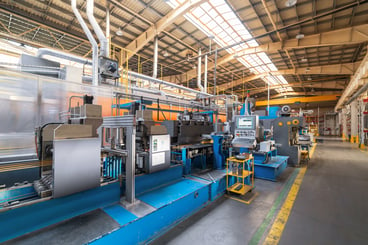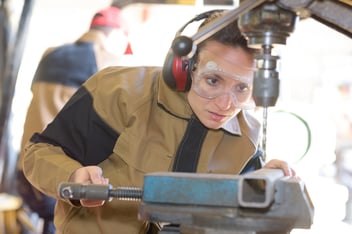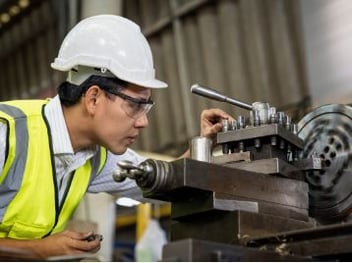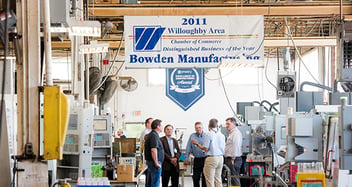4 Steps to De-Risk New Machine Design and Development Execution Projects
 For some manufacturers, there comes a time when a new machine is needed and off-the-shelf machinery may not meet their needs. Either the machine is no longer reaching optimum output or it's incapable of producing a new product or part.
For some manufacturers, there comes a time when a new machine is needed and off-the-shelf machinery may not meet their needs. Either the machine is no longer reaching optimum output or it's incapable of producing a new product or part.
In the past, many large manufacturers had in-house engineering and machine-building teams to develop, assemble, and deploy new equipment. In recent years, manufacturers have seen a shift—most companies now rely on third-party machine builders to transform their ideas and needs into new, custom machines.
However, manufacturers know a new machine build is a large undertaking in terms of time, resources, and budget—especially small- to medium-sized manufacturers who are likely on a stricter budget with fewer resources. That’s why manufacturers of any size can benefit from a partner who directs their team through every step of the machine design and development process.
If you’re considering a custom machine build to enhance operations at your manufacturing facility, consider this 4-step execution process, called the 4D process, to minimize risk.
1. Define
Building a custom machine is a significant investment for any manufacturer. That’s why the first step in the ideation process is defining the overall scope, functional specifications of the project, and ROI requirements. To do so, you must identify the problem at hand.
Ask your team: What limitations are we facing with our existing machinery?
For example, if you’re frequently sinking money into costly repairs and replacements, a custom build could be the answer.
Gather your team to define what a successful solution looks like. This may include brainstorming new ideas to solve for the underlying issues impacting productivity and profitability at your plant, and how a new build will help you overcome them.
2. Discover
Next, you’ll develop functional specifications to determine how the machine will perform. This is the step in the process where you consider potential solutions, create concepts, and identify costs. You’ll also want to define the inputs and outputs of the machinery and how these functions connect with other components and systems in use.
While creating potential concepts, test the designs before investing time and money into development to reduce technical risk and gain confidence in the solution. Prototyping is an inexpensive way to explore your ideas and show the intention behind the overall design concept.
As you iron out all design flaws and identify the most appropriate materials needed to complete the build, you’ll also be able to better determine a proposed timeline for completion.
3. Develop
In the development stage, you’ll move into the formal engineering of the design based on what you learned in steps one and two. This includes procuring the materials needed to bring the custom design to life.
Have vendors prepare the electrical and mechanical assemblies for your build based off the approved layout. Consider how the machine controls motors, pumps, valves, and other equipment to assemble the new product or part.
Designers, engineers, manufacturers, and suppliers will work with you to identify the requirements and specifications to ensure project alignment. Additionally, they’ll prepare a quote for the design’s fabrication and installation.
4. Deliver
In the final stage, it’s time to procure, build, and deploy the system. This includes purchasing and fabricating the necessary components for assembly, as well as installing the system for performance testing.
During this stage, test the system with your team to ensure a smooth transition once the machine is installed. Provide the team with complete documentation of the build, including application programs, drawing packages, operator manuals, and recommended spare part lists. To mitigate any problems that may arise, have the machining expert train personnel on how to use the new build.
After testing is complete, your machine will be ready for install. Take into account the need to optimize your plant processes with the new system. Refine any process development, discuss it with the floor employees and listen to their concerns and ideas, and make adjustments where needed.
This will ease the configuration of a new machine into a plant floor.


